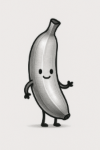



































































































The Sunscreen Paradox: Why Skin Cancer Rates Are Soaring Despite Protection Efforts
The rising incidence of skin cancer in the United Kingdom, despite increased sunscreen use and a decline in sunbed use, has sparked debate about the safety of sunscreen itself. Certain ingredients in sunscreens may contribute to skin cancer risk, challenging the conventional view that they are universally protective.
Over the past few decades, skin cancer rates, particularly melanoma, have surged. Cancer Research UK notes a 31% increase in melanoma cases over the past decade, with approximately 20,800 new cases projected for 2024. This rise coincides with a significant increase in sunscreen use, as public health campaigns have promoted it as a primary defence against ultraviolet (UV) radiation. However, some argue that the chemical composition of many sunscreens may be a contributing factor to this trend, rather than a solution.
Chemical sunscreens, unlike mineral-based ones, contain active ingredients such as oxybenzone, avobenzone, octinoxate, octocrylene, homosalate, and octisalate. These compounds absorb UV rays but are also absorbed into the bloodstream, raising concerns about their long-term effects. A 2020 study by the U.S. Food and Drug Administration (FDA) found that these six chemicals can reach blood concentrations exceeding the FDA’s safety threshold after a single application. While the FDA stated that absorption does not necessarily equate to harm, it called for further research due to potential risks, including endocrine disruption and cellular damage.
Oxybenzone, one of the most scrutinised sunscreen ingredients, has been flagged as a potential endocrine disruptor. Studies, including a 2019 report by the National Toxicology Program, found that high doses of oxybenzone in rats led to increased thyroid tumours and uterine enlargement. Other research suggests that oxybenzone may alter mammary gland cells in mice, potentially contributing to processes that could lead to tumour development. Similarly, avobenzone has been shown in cellular studies to block testosterone effects at low doses, while combinations of avobenzone and homosalate reduced testosterone levels in male zebrafish, hinting at hormonal imbalances that could, over time, contribute to cancer risk.
Another concern is benzene, a known carcinogen not intentionally added to sunscreens but found as a contaminant in some products. In 2021, Valisure, an independent testing laboratory, detected benzene in 78 sunscreen and after-sun products, including brands like Neutrogena and Banana Boat, with levels as high as 6.26 parts per million in some batches. Benzene is linked to leukaemia and other cancers, and its presence in sunscreens, even in trace amounts, raises questions about manufacturing processes and long-term safety. Although the amounts detected may be small, chronic exposure through daily sunscreen use could accumulate, potentially increasing cancer risk.
Octocrylene, another common sunscreen ingredient, has also come under scrutiny. Some studies suggest that octocrylene can degrade into benzophenone, a compound with potential carcinogenic properties, over time or with sun exposure. The European Commission’s Scientific Committee on Consumer Safety concluded in 2021 that oxybenzone, homosalate, and octocrylene may not be safe at current usage levels, prompting the European Union to reduce allowable concentrations in sunscreens.
Proponents of a non-pharmaceutical view argue that the rise in skin cancer rates correlates with the widespread adoption of chemical sunscreens since the 1970s, a period when sunbed use has actually declined. They suggest that these chemicals, by penetrating the skin and entering the bloodstream, may cause cellular or DNA damage over time, potentially contributing to melanoma and other skin cancers. This perspective is supported by posts on platforms like X, where users have expressed scepticism about sunscreen safety, citing ingredients like oxybenzone and octinoxate as potential carcinogens and noting a 400% rise in skin cancer since the 1970s, despite increased sunscreen use.
Trending right now
Pay your tax bill with a promissory note.How to stop posts from facebook groups showing in my timeline.
How to teach your child to swim easy lessons anyone can do
How to identify hot selling products on Ebay
Cease and desist letter to send to the bailiffs to stop them collecting council tax
How to remove inspyware from your laptop
How to stop videos playing automatically in chrome
How does the covid vaccine protect others
How to open a jar easily without strain
A miracle is on its way to you right now
How to force a file to download simple
Made to measure drawer organisers. Easy to install.
Some things I am selling please look through thank you
Removing hairs from your ears using depilatory creams that are available in the market.
Are you a commercial electrical company
Promote your youtube videos to boost views
Stop paying council tax and remove yourself from their database
How to unblock a plug hole in your bath
How to make first letter only captial using php.
This is the letter I sent to the tv license when they kept harrassing me.
Giving your bank details to Trustly through ebay
How to stop text enhance pop ups showing on webpages.
How to write a good sales page
How to stretch an image in a td cell to cover the whole cell using css
Does Salt and Water Cure Hayfever
How to stop coughing quickly and easily
How to stop bank scammers over the phone quickly and easily
Some things I am selling please have a look
Recieved a text from royal mail is it a scam
What do you need help with in your business
Parking charge Notice by private car parks not council.
How to create a date array in php which come up with todays date selected
How to get scammers off the phone and have some fun